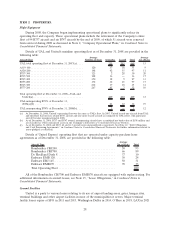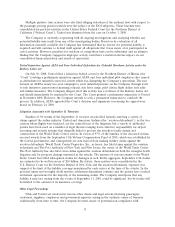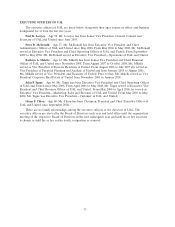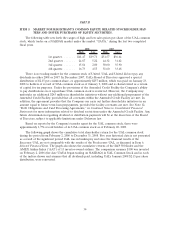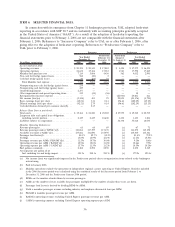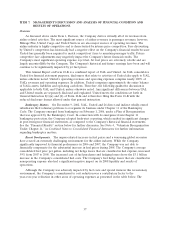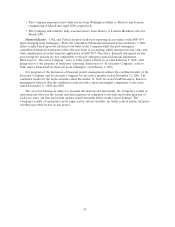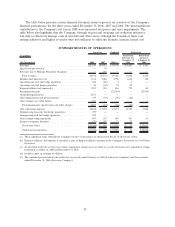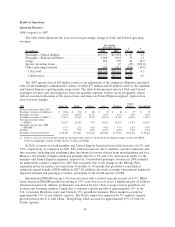United Airlines 2008 Annual Report Download - page 37
Download and view the complete annual report
Please find page 37 of the 2008 United Airlines annual report below. You can navigate through the pages in the report by either clicking on the pages listed below, or by using the keyword search tool below to find specific information within the annual report.ITEM 7. MANAGEMENT’S DISCUSSION AND ANALYSIS OF FINANCIAL CONDITION AND
RESULTS OF OPERATIONS.
Overview
As discussed above under Item 1, Business, the Company derives virtually all of its revenues from
airline related activities. The most significant source of airline revenues is passenger revenues; however,
Mileage Plus, United Cargo and United Services are also major sources of operating revenues. The
airline industry is highly competitive and is characterized by intense price competition. Fare discounting
by United’s competitors has historically had a negative effect on the Company’s financial results because
United has generally been required to match competitors’ fares to maintain passenger traffic. Future
competitive fare adjustments may negatively impact the Company’s future financial results. The
Company’s most significant operating expense is jet fuel. Jet fuel prices are extremely volatile and are
largely uncontrollable by the Company. The Company’s historical and future earnings have been and will
continue to be significantly impacted by jet fuel prices.
This Annual Report on Form 10-K is a combined report of UAL and United. As UAL consolidates
United for financial statement purposes, disclosures that relate to activities of United also apply to UAL,
unless otherwise noted. United’s operating revenues and operating expenses comprise nearly 100% of
UAL’s revenues and operating expenses. In addition, United comprises approximately the entire balance
of UAL’s assets, liabilities and operating cash flows. Therefore, the following qualitative discussion is
applicable to both UAL and United, unless otherwise noted. Any significant differences between UAL
and United results are separately disclosed and explained. United meets the conditions set forth in
General Instruction I(1)(a) and (b) of Form 10-K and is therefore filing this Form 10-K with the
reduced disclosure format allowed under that general instruction.
Bankruptcy Matters. On December 9, 2002, UAL, United and 26 direct and indirect wholly-owned
subsidiaries filed voluntary petitions to reorganize its business under Chapter 11 of the Bankruptcy
Code. The Company emerged from bankruptcy on February 1, 2006, under a Plan of Reorganization
that was approved by the Bankruptcy Court. In connection with its emergence from Chapter 11
bankruptcy protection, the Company adopted fresh-start reporting, which resulted in significant changes
in post-emergence financial statements, as compared to the Company’s historical financial statements.
See the “Financial Results” section below for further discussion. See Note 4, “Voluntary Reorganization
Under Chapter 11,” in Combined Notes to Consolidated Financial Statements for further information
regarding bankruptcy matters.
Recent Developments. The unprecedented increase in fuel prices and a worsening global recession
have created an extremely challenging environment for the airline industry. While the Company
significantly improved its financial performance in 2006 and 2007, the Company was not able to
financially compensate for the substantial increase in fuel prices during 2008. The Company’s average
consolidated fuel price per gallon, including net hedge losses that are classified in fuel expense, increased
59% from 2007 to 2008. The increased cost of fuel purchases and hedging losses drove the $3.1 billion
increase in the Company’s consolidated fuel costs. The Company’s fuel hedge losses that are classified in
nonoperating expense also had a significant negative impact on its 2008 liquidity and results of
operations.
Although the Company was adversely impacted by fuel costs and special items in this recessionary
environment, the Company’s commitment to cost reduction was a contributory factor to the
year-over-year reduction in other areas of operating expenses as presented in the table below. The
37



